Chapter 2
New Economic Frameworks for an Asian Century
Economic regionalism
As members of the Commonwealth, Britain's move to the European Economic Community (later European Union) in the early 1970s and the eroding of Commonwealth tariff preferences impacted both Australia and Malaysia. Australia was particularly affected and the event saw the notion of a free trade area for Australia and Asia raised as early as 1972.18 But it was not until 1989 that Australian Prime Minister Bob Hawke launched an audacious plan for an Asia–Pacific Economic Cooperation (APEC) forum and tasked the then Secretary of DFAT, Richard Woolcott, to consult widely across the region on the proposal. The vision for APEC was to facilitate economic growth and prosperity by creating a seamless regional economy through trade and investment liberalisation, business facilitation, and economic and technical cooperation. Malaysian Prime Minister Tun Dr Mahathir Mohamad did not support the idea initially and instructed Minister of International Trade and Industry Datuk Seri Rafidah Aziz to consult on an alternative East Asian Economic Group (EAEG) that would include ASEAN member states, plus Japan, China, Taiwan, Hong Kong and South Korea.
Ultimately, regional support coalesced around a grouping with wider membership that encompassed the then-six ASEAN members, Japan, South Korea, Australia, New Zealand, Canada and the United States. APEC has now grown to 21 members and accounts for 48 per cent of world trade.19 After the Asian Financial Crisis of 1997–98, however, the idea for an East Asian grouping was revived, consolidating around a newly-formed ASEAN-Plus Three (China, Japan and South Korea). This was followed by the launch in Kuala Lumpur of the East Asia Summit in 2005, bringing in Australia, New Zealand and India (the United States and Russia joined later in 2012). These two forums, APEC and the EAS, in which Australia and Malaysia have played productive roles, were outcomes of a new era of regionalism and today play central roles in regional economic and security cooperation.
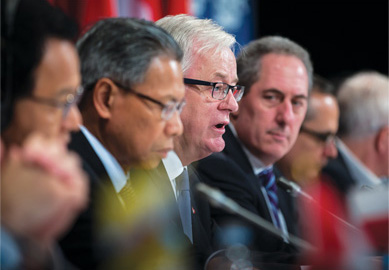
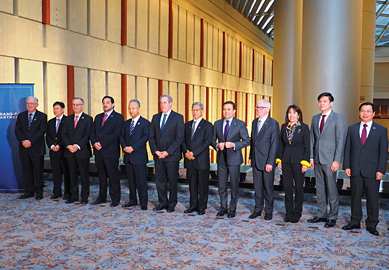
Malaysia and Australia are also part of the ASEAN–Australia–New Zealand Free Trade Agreement (AANZFTA) which entered into force in January 2010. It sits among Australia's largest, and most ambitious, trade arrangements. It is also ASEAN's first comprehensive FTA covering goods, services, investment and other issues including intellectual property, electronic commerce and competition.20 AANZFTA's reach is extensive—across a combined population of 649 million people and a combined GDP of US$4.2 trillion.21 The conclusion of the Trans-Pacific Partnership Agreement (TPP) negotiations in October 2015 provides further opportunities to Malaysian and Australian businesses across the fast-growing Asia-Pacific region. The TPP builds upon the Trans-Pacific Strategic Economic Partnership Agreement (2006) that consists of Brunei, Chile, New Zealand and Singapore. There are currently 12 parties involved in the TPP which, as well as the four originating members, include Australia, Canada, Japan, Malaysia, Mexico, Peru, the United States and Vietnam. Reflecting our continued shared commitment to pursuing further regional trade liberalisation and integration, Malaysia and Australia are also parties to negotiations on the Regional Comprehensive Economic Partnership (RCEP).22 The RCEP is an ASEAN initiative that proposes an FTA comprising all ten ASEAN nations, plus their current FTA partners, which include Australia, China, India, Japan, Republic of Korea and New Zealand.
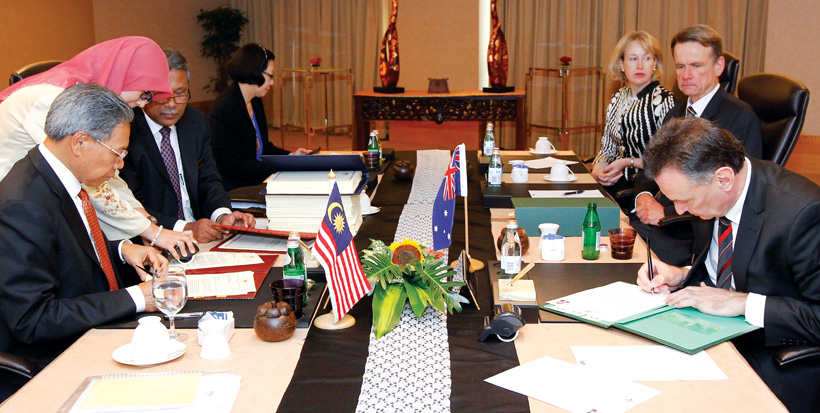
MAFTA: New bilateral impetus
Our shared involvement in these multilateral regional efforts, however, did not see our bilateral trade relationship neglected and, on 1 January 2013, the Malaysia–Australia Free Trade Agreement (MAFTA) entered into force. Building on the market access provisions of AANZFTA, MAFTA guarantees tariff-free entry for 97.6 per cent of current Australian goods exports to Malaysia, rising to 99 per cent by 2017, while Malaysian exports benefit from comprehensive duty-free entry into Australia.23 This trade stimulus is supported by important institutional alignments. Our banking and judicial systems share similarities, while some Malaysian regulatory frameworks, such as the Malaysian Securities Commission, are modelled in part on the Australian system. These synergies open the services sector up to opportunities for greater collaboration. Leading the way in the financial services area has been the Australia and New Zealand Banking Group Limited (ANZ). ANZ entered the Malaysian market in 1971 and in 2007, purchased a 19.1 per cent interest in Malaysia's AmBank Group, now one of the largest financial institutions in Malaysia. Under MAFTA there is scope for further mutually beneficial partnerships to be forged in the financial services sector.
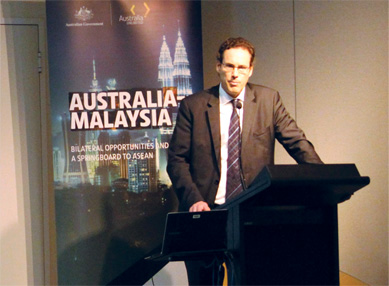
Another area of considerable collaboration is oil and gas. Malaysia is the second largest, and Australia the third largest, liquid natural gas (LNG) exporter in the world. While Australia has the region's largest gas reserves, Malaysia is the fourth largest reserve holder.24 Australian companies 'have learned to be innovative, nimble and highly efficient' in this lucrative sector and Malaysian and Australian entrepreneurs recognise the potential for collaboration. At the government-level, Austrade is working with Malaysia to build cooperation in this sector and, in 2014, convened a Global Oil and Gas Workforce Development Forum in Kuala Lumpur together with the Malaysian Oil and Gas Services Council (MOGSC) and Universiti Teknologi Petronas (UTP).25 Such collaboration highlights the mutually beneficial potential to be
My Story
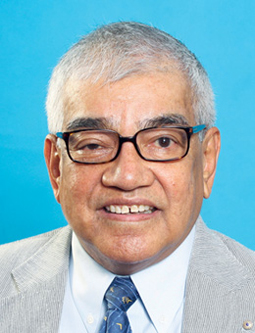
The Malaysia Australia Business Council (MABC) began in 1986. It was a great honour to be the founding Chairman and to remain as Chairman for almost 20 years. Today, in my role as Honorary Life Chairman of the MABC, I am very fortunate to continue my close association with Australia.
My relationship with the Australian High Commission, however, pre-dates my involvement with the MABC. In 1955, just before I left Malaysia to attend university abroad, I was fortunate to meet Thomas Critchley and experience his enthusiasm for the potential of Australia- Malaysia bilateral relations. Long after he left Malaysia Thomas Critchley remained a close friend of many Malaysian business and government leaders and his spirit of friendship has endured. This chance meeting with Australia's first High Commissioner to Malaysia certainly foreshadowed what was to become an important part of my future business and personal life.
Throughout the years my role with the MABC has afforded me a very intimate view of numerous developments, opportunities and challenges in the Australia–Malaysia relationship. I have witnessed the birth of many successful business ventures and I have seen a very rapid growth in two-way trade. However, while business and trade, security, tourism and education shape the essence of the formal ties, I believe that it is the personal friendships forged along the way that provide something 'extra special' that makes the bond so strong. The hand of friendship between Australians and Malaysians touches people of all ages across all walks of life.
It is testament to the strength of the Australia–Malaysia relationship that our inherent friendship has continued even during times of diplomatic tension. Indeed, it is very interesting to reflect that even during these slightly rocky periods the trade relationship between our two countries flourished. This illustrates that connections between Australia and Malaysia are forged on many levels and I am confident they will grow even stronger in the future.
I look forward to attending my 45th Melbourne Cup this year and to forming new friendships with Australian diplomatic representatives to Malaysia in the years ahead.
My Story
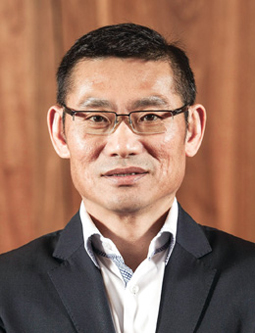
Managing Director, e-Centric Innovations and former Australia-Malaysia Institute Board Member
I first came to Australia in 1982 to study engineering at Monash University. When I first arrived, I had a clear intention of returning to Malaysia at the completion of my degree. After graduation, I continued with further studies and, 33 years on, I'm still in Australia. This unintended yet pleasant outcome resulted in my becoming an Australian (and a proud one at that) in 2004.
As the country of my birth, however, I will always have a connection with Malaysia. My parents and siblings are still living in my hometown, Penang, and I visit at least eight times a year to oversee my businesses in Kuala Lumpur and Penang. Working across Asia for the last 25 years, as an executive of a multinational firm and as an Australian entrepreneur, has given me the opportunity to see relations between Australia and Malaysia from a unique perspective.
I was invited to join the Australia Malaysia Institute (AMI) Board in 2012. This was both a privilege and honour to be connected to the country of my birth in an official capacity. The role of the AMI is to foster and deepen people-to-people links between Australia and Malaysia across public and private institutions–something I can naturally 'add value' to and am passionate about. Being on the Board of AMI and Asialink, I am fortunate to have access to platforms for fostering relations between our countries. Bringing my experience, networks and most importantly my heritage, to these roles allows me to provide advice when required, bridge the cultural divide when necessary, and sell the complementary virtues and values of both countries.
Australia and Malaysia have many things in common. Both are small in terms of population, yet advanced economically. Both face the same challenges and opportunities of being surrounded by neighbours with large, young populations hungry for growth. With our alumni of over 400 000 Malaysians who have studied in Australia, there is no shortage of 'ambassadors' to tap into this opportunity to collaborate, and build on a history of good relations in the process.
I am fortunate to claim Australia and Malaysia as 'my countries' and will continue to foster relations in every way I can–it is a natural fit for me.
Opportunities for future growth
There are many areas that are ripe for future growth in the Australia–Malaysia bilateral trade relationship. These include financial services, the resources and agriculture sectors, and infrastructure development. But perhaps the most dynamic areas in this growth trajectory are currently found in the services sector, notably education and tourism. Education related travel is Australia's largest service export to Malaysia, amounting to around A$720 million in 2014. On average, around 22 000 Malaysian students enrol to study in Australia each year, with another 12–15 000 studying on an Australian university campus in Malaysia. Recreational tourism follows close behind, adding just over A$533 million to the Australian economy in 2014. These two thriving areas of exchange—tourism and education—are discussed in subsequent chapters.
For Malaysia, the bilateral relationship holds enormous potential in investment. There are already significant Malaysian interests in Australia, notably in the property–tourism nexus. In 2012 Malaysia's YTL Corporation Berhad—owner Marriott hotels in Brisbane, Melbourne and Sydney. The deluxe Hayman Island Resort is also owned by Malaysian company Mulpha. In 2015, more Malaysian-backed hotels will open their doors, with the boutique Mayfair Hotel in Adelaide being developed by the Adabaco Group and The Tank Stream Hotel in Sydney by IGB Corporation Berhad. As Malaysian investment in Australia's tourism sector increases, so too have Australian investors become increasingly engaged in Malaysia. Lend Lease, for example, is a key partner in the development of the A$2.8 billion Tun Razak Exchange Lifestyle Quarter in central Kuala Lumpur. Lend Lease has been a part of many developments in Malaysia over the past 35 years, including the iconic Petronas Twin Towers and the state-of-the-art Pinewood Iskandar Malaysia Studios, a television and film production facility that opened in 2014.
The past 60 years have been truly dynamic for Australia–Malaysia trade and investment relations and demonstrate—from tin to television—the compatibility and vision in our many partnerships. Today, our capacities and our interests are closely aligned. From economic interactions that began over a century ago, when the spirit of entrepreneurship first animated the relationship, the frameworks for future cooperation have been moved into place. With continued growth across a range of sectors, both countries can look forward to a deepening and mutually beneficial economic engagement.
My Story

Chairman Asialink
My story of friendship with Malaysia is a deeply personal one, of two families—the Tan family in Malaysia and the Myer family in Melbourne–which has endured for over 40 years.
Business interests were the catalyst that brought us together in the mid-1970s. The Tan family from Malaysia was developing one of Singapore's first suburban shopping centres, the Parkway Centre. At the time, The Myer Emporium Ltd was seeking space in Asia for its first Asian Myer department store. Both strategies were far sighted. Although the opportunity for a business relationship was obvious, the partnership did not proceed—and this was due to the generosity of spirit shown by Dato' Tan Chin Nam, and his family.
Reflecting on the last 40 years, it is the close personal friendship between Dato' Tan Chin Nam and Bails Myer that is the enduring legacy both men have built, and continue to build today. That relationship now spans two generations, and was developed in both Malaysia and in Australia. For my part, the opportunity to work, and invest, with the Tan family enabled me and my family to live in Malaysia for almost five years in the 1990s. There we built a whole new set of personal friendships and business relationships that continue to this day, and are of much significance to my family.
Dato' Tan Chin Nam is good at making and keeping friends. He is a great friend of Australia. His relationship with Bart Cummings, who is legendary in horse racing circles, led to Dato' Tan winning four Melbourne Cups. So, while Australia and Malaysia's cooperative relationship is extensive—across defence, law enforcement and the recent airline tragedies—it is the power and significance of people-to-people relationships that remain at the heart of our engagement. The story of Dato' Tan Chin Nam and Bails Myer, and their families, is one such relationship.
It is my hope that in celebrating the 60 years of diplomatic engagement between the two countries, we recognise and celebrate many such people-to-people relationships.